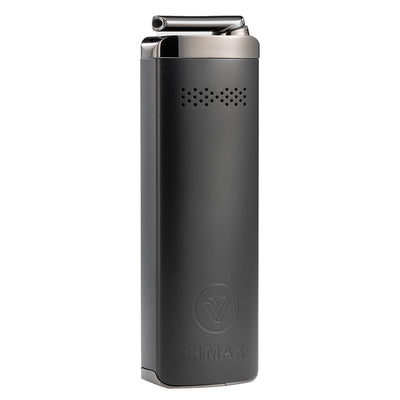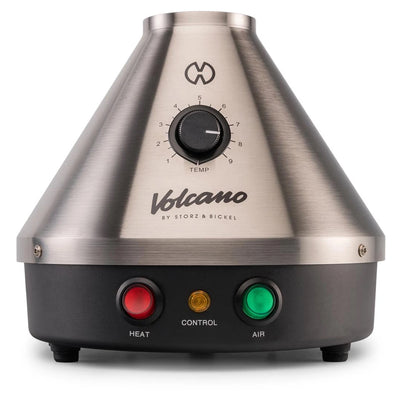For people with asthma, anything that affects the lungs deserves a closer look. That includes dry herb vaping. While it skips the smoke and harmful by-products of traditional combustion, it’s not risk-free and definitely not a one-size-fits-all solution.
So, can dry herb vaping work for people with asthma? Maybe. But you need to approach it carefully, understand the potential risks, and stay in control every step of the way. Here’s what to know.
What is dry herb vaping?
Dry herb vaping uses heat, not fire, to release active compounds from plant material. A vaporizer brings herbs to a set temperature, just high enough to turn certain compounds into vapor without burning the material. That difference matters, especially for sensitive lungs.
Unlike smoking, there’s no combustion, no ash, and no smoke. That means you avoid things like tar and carbon monoxide—major culprits in lung irritation and damage. But vapor, while generally cleaner, can still carry compounds that might not sit well with asthmatic lungs.
👉 Benefits of Vaping vs. Smoking Dry Herbs
Why those with asthma consider vaping
The biggest draw is simple: vaping is cleaner than smoking. For those who already use certain herbs for relaxation or symptom support, vaping can offer a way to inhale those compounds without taking in smoke.
But the absence of smoke doesn’t mean the absence of risk. The experience is personal. If you have asthma and want to explore vaping, caution is key.
Risks of vaping with asthma
Here’s the part too many people skip over: even without combustion, vaping can still irritate those with asthma.
In some cases, vapor can trigger asthma symptoms like wheezing, coughing, or shortness of breath. For others, it might feel fine at first but cause irritation over time. The risks vary depending on your sensitivity, the herb used, the temperature, and the quality of the vaporizer.
We also don't have enough long-term data on the effects of dry herb vapor on people with asthma. Most research focuses on nicotine or other liquid-based vaping, and even that picture is still evolving. So, while dry herb vaping may seem like a gentler option, it's still a gamble unless you handle it carefully.
If you have asthma, take these precautions
If you have asthma and want to take a dry herb vape for a spin, here are a few tips to reduce your risk and stay in control.
The Safest way to vape with asthma:
1. Consult a healthcare professional
Always talk to your doctor first. Vapor might interact with your condition or medications in unexpected ways. A doctor can help you assess whether it makes sense for your specific case and guide you on how to do it safely.
2. Choose a high-quality vaporizer
Not all vaporizers are created equal. Look for one with:
- Precise temperature control: Easy access to low temperatures is key.
- Open airflow: Relaxed, open airflow puts less strain on your lungs.
- A clean, safe heating element: Heaters made from ceramic or stainless steel produce cleaner vapor.
- Effective filtration, if possible: Cooling stems and glass bubblers will help soften the vapor before it reaches your lips.
Our recommendations
The Venty and Volcano Classic offer relaxed open airflow that is easy on the lungs, while conduction vapes like the POTV XMAX V3 Pro and the DaVinci IQ3 are easy sippers that aren't too demanding.
3. Stick to lower temperatures
High heat releases more compounds, including potential irritants. Start at the lowest temperature range recommended for your herb, and work your way up only if needed.
Lower temps generally produce smoother vapor and fewer airway triggers. For starters, we recommend between 350°F / 176°C and 370°F / 187°C. This temp area produces very light but flavorful vapor with subtle effects. Feel it out first and adjust from there.
Lower temperatures also release different compounds and terpenes, which produce different effects. Check out our guide on Terpenes and how you can use different temperatures for a variety of uses.
4. Use only clean, well-sourced herbs
Stay away from mystery blends or poorly stored herbs. Moisture, mold, or contamination can cause real issues, especially for sensitive lungs. Only use clean, lab-tested plant material from a trusted source. And avoid anything with added oils or synthetic ingredients.
5. Clean your device regularly
A dirty vaporizer builds up residue, which can burn or degrade with heat. This can release irritants you don’t want in your lungs, so clean regularly. Take apart removable pieces, use alcohol wipes or brushes, and check the filter and mouthpiece often.
6. Start small, low, and slow
If you’re new to vaping or trying it for the first time with asthma, start with short, low-temp sessions and take small hits. Don’t jump into the deep end just yet and take long draws. Give your lungs time to respond. Track how you feel during and after each session, and stop immediately if symptoms flare.
7. Got an inhaler? Have it nearby
Have your inhaler ready to go in case any severe symptoms arise.
7. Limit frequency and duration
Don’t chain sessions or make vaping a daily habit unless you’ve cleared it with your doctor. The more exposure your lungs get, the higher the risk of irritation. Less is more here.
8. Monitor your symptoms closely
Keep a log if needed. Watch for any tightness, coughing, shortness of breath, or changes in peak flow. If symptoms increase, stop vaping and talk to your doctor.
9. Stay informed
The science around vaping and asthma still has a long way to go. Stay updated on new studies, product recalls, and regulatory guidance. What seems safe today might look different in a few years. Be ready to adjust based on the latest evidence.
We’ll do our best to stay informed and update you as new information is released.
When to avoid vaping entirely
In some cases, even cautious vaping isn’t worth the risk. You should not vape if:
- Your asthma is uncontrolled or severe
- You’ve had recent flare-ups or ER visits
- You react strongly to airborne irritants or vapor
- Your doctor advises against it
Vaping is optional. Your health isn’t. If there's any doubt, skip it.
Personal experience from Jerry Stickstones
"Vaping with asthma is a personal decision that I have experienced. My wife used to vaporize dry herbs to treat her chronic inflammation with great success, until the inflammation spread to her lungs and she developed asthma. At that point, the consequences were too great to vaporize —her chest would tighten up quite severely— and she decided to look for alternative methods of ingestion. Personally, I wouldn't recommend smoking or vaporizing to an asthmatic. But if they hell-bent on vaporizing, I insist they have their inhaler ready. We found that a conduction vape (like the POTV Starry or DaVinci IQC) works best - take little sips of vapor that don't stress the respiratory system with more work."
Conclusion
Dry herb vaping may offer a cleaner alternative to smoking, but it’s not harmless, especially for asthma patients. It still carries the potential for irritation, and there’s a lot we don’t yet know about the long-term effects on sensitive lungs.
If you're set on trying it, make your health the priority. Use a high-quality vaporizer, keep temps low, track your symptoms, talk to your doctor, and stay open to change if your body gives you a red flag.
When done right, dry herb vaping might give you a smoother, more controlled way to experience plant compounds. But the key word here is might. Asthma adds another layer of complexity, and there’s no substitute for caution, care, and informed decision-making.
👉 Shop all Dry Herb Vaporizers
FAQs: Dry Herb Vaping for Asthma
1. Can people with asthma use dry herb vaporizers?
While some people with asthma report fewer symptoms when switching from smoking to vaping dry herbs, everyone’s condition is different. It’s important to talk to your doctor before trying any form of aromatherapy, even vapor.
2. Is dry herb vaping better for your lungs than smoking?
Yes, dry herb vaping avoids combustion, which means it doesn't produce the same harmful tar, carbon monoxide, or carcinogens found in smoke. This can lead to a gentler experience for the lungs, which is why some users with respiratory sensitivities prefer it.
3. Are certain temperatures better for people with asthma when vaping?
Lower temperatures (around 350°F / 176°C and 370°F / 187°C) can reduce harshness and the release of potential irritants.
4. What kind of dry herbs are safest for vaping with asthma?
Stick to high-quality, lab-tested herb without additives. Avoid anything with flavoring agents, pesticides, or mold, as these can irritate the lungs.
5. Are convection vaporizers better than conduction for asthma sufferers?
Convection vaporizers often produce smoother, cooler vapor since they heat air instead of directly heating the herb. This may be more comfortable for sensitive lungs, including those with asthma.
6. Should I use a water pipe or bubbler with my vape to cool the vapor?
A bubbler or water piece can help cool and filter vapor further for a gentler hit.












